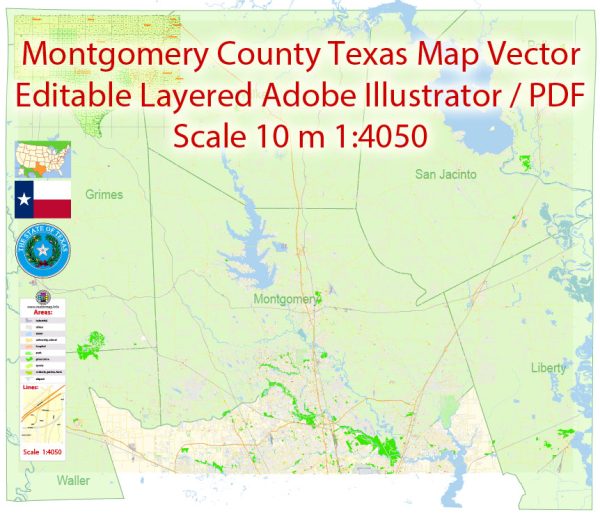General overview of the urban development history in Montgomery County, Texas.
Montgomery County is located in southeastern Texas and is part of the Houston-The Woodlands-Sugar Land metropolitan area. The county has a rich history that dates back to the early 19th century. Here are some key points in the urban development history of Montgomery County:
- Early Settlement and Development (1800s): The area that is now Montgomery County was originally inhabited by Native American tribes. The first European settlers arrived in the early 1800s, and the region saw an increase in population with the establishment of towns and communities.
- Lumber Industry: In the late 19th and early 20th centuries, the lumber industry played a significant role in the economic development of Montgomery County. The availability of timber resources led to the establishment of sawmills and lumber towns.
- Oil Discovery: The discovery of oil in the early 20th century had a transformative impact on the county. The oil industry brought economic prosperity and led to population growth. Cities like Conroe, the county seat, experienced significant development during this time.
- Suburbanization and Population Growth: In the mid-20th century, Montgomery County, like many other areas in the United States, experienced suburbanization. The proximity to Houston, along with improved transportation infrastructure, contributed to population growth and the development of suburban communities.
- Economic Diversification: Over the years, Montgomery County has worked towards economic diversification. The growth of industries beyond oil, such as healthcare, education, and technology, has contributed to the county’s economic stability.
- Master-Planned Communities: The late 20th and early 21st centuries saw the development of master-planned communities in Montgomery County. These planned developments often include residential areas, commercial spaces, parks, and other amenities designed to create self-contained, sustainable communities.
- Infrastructure Development: Ongoing infrastructure development, including the expansion of highways and the improvement of public services, has played a crucial role in supporting the urbanization of Montgomery County.
It’s important to note that Montgomery County’s urban development is dynamic, and ongoing initiatives and projects may continue to shape its landscape. For the latest and more detailed information, you may want to check with local government sources, historical societies, or planning departments in Montgomery County.


 Author: Kirill Shrayber, Ph.D.
Author: Kirill Shrayber, Ph.D.